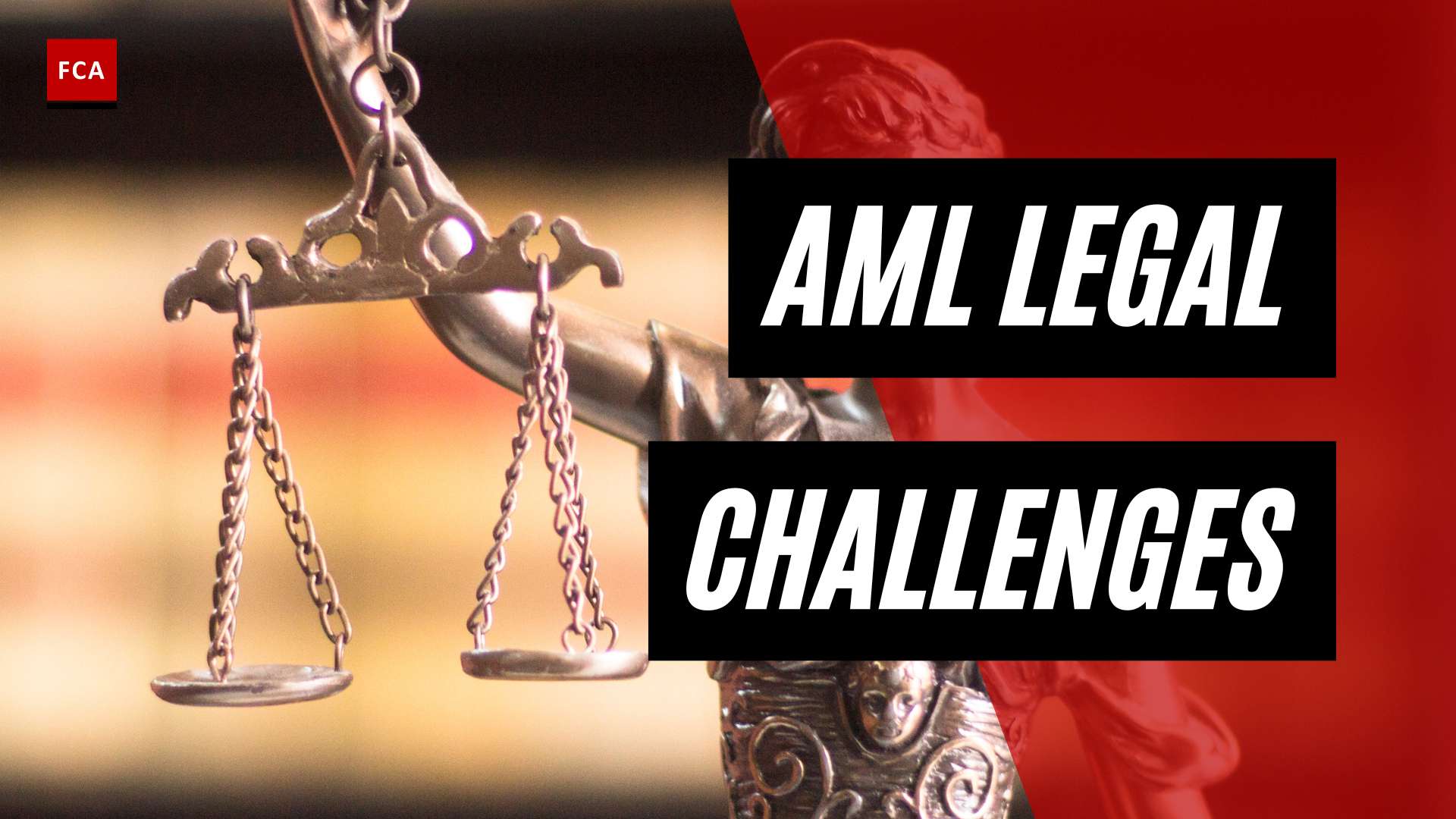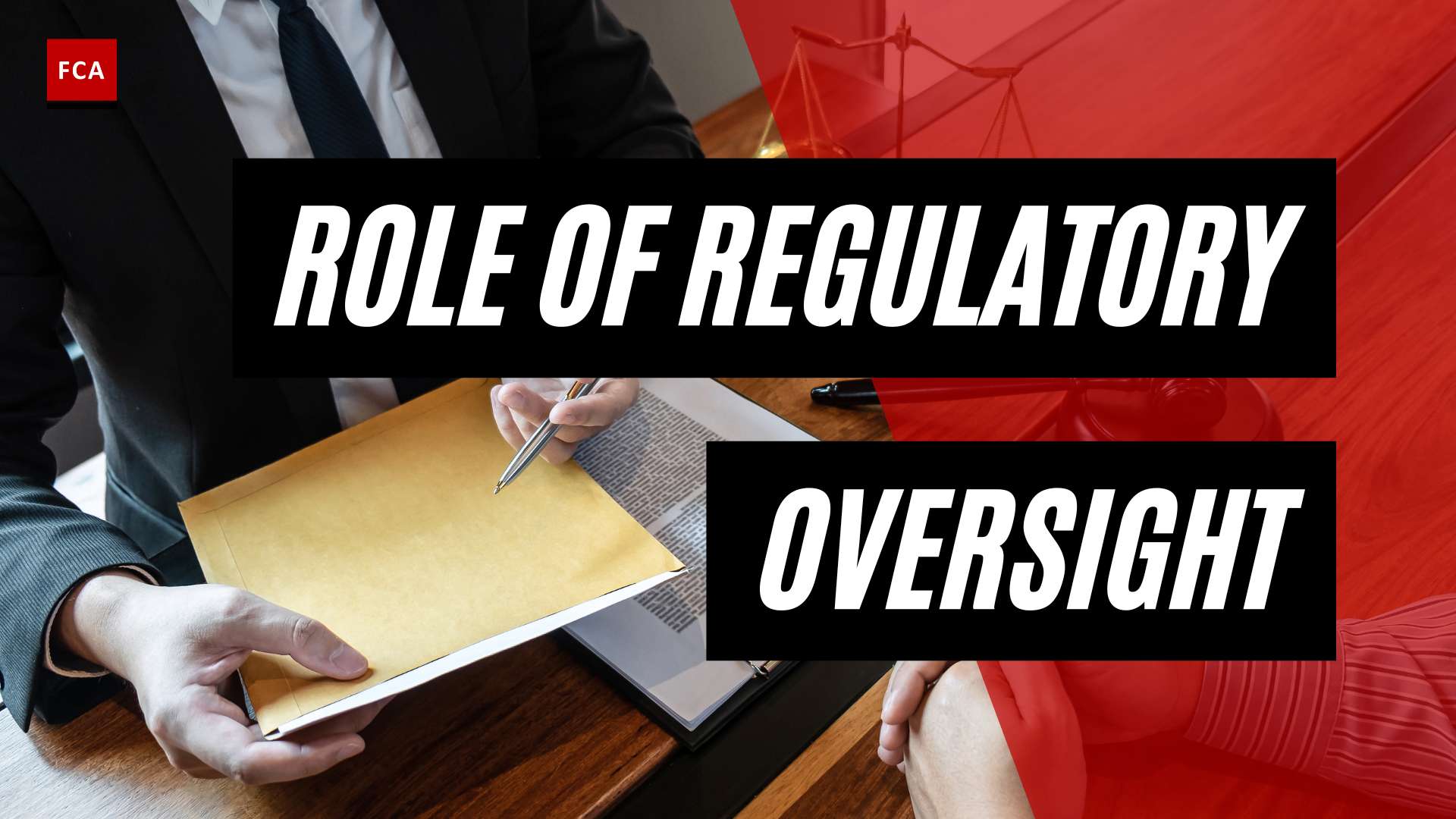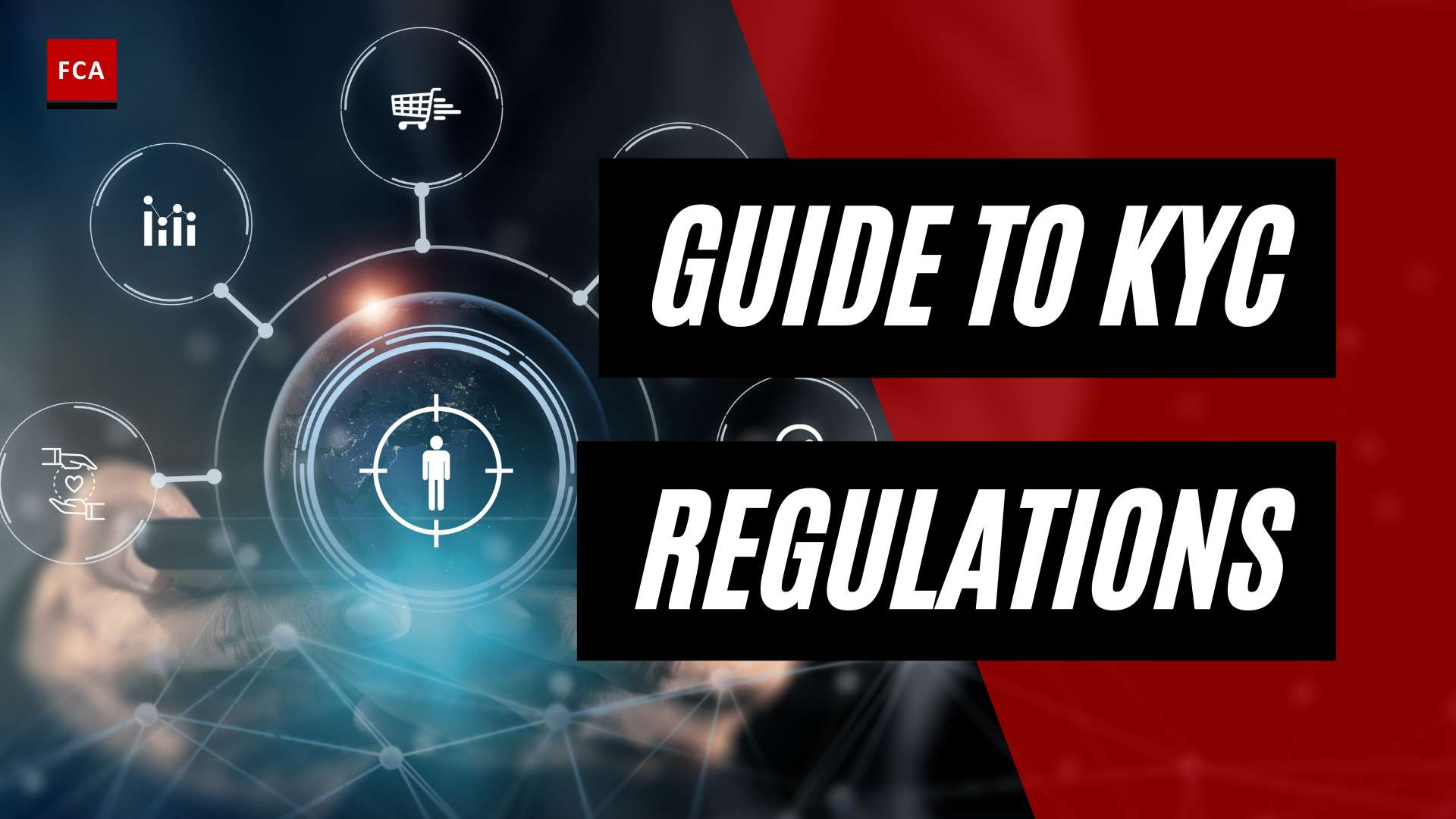Understanding AML Compliance
Navigating the complexities of anti-money laundering (AML) compliance is crucial for financial institutions and businesses around the world. A well-structured and effective AML compliance policy is the cornerstone in the fight against money laundering and financial crimes.
Definition and Importance of AML Compliance
AML compliance refers to the set of laws, regulations, and procedures designed to prevent criminals from disguising illegally obtained funds as legitimate income. It is not just about having a program in place; a well-implemented AML compliance program demonstrates a commitment to ethical business conduct.
The importance of a robust AML compliance policy cannot be overstated, recent occurrences have shown that financial institutions risk severe fines and harm to their reputation for breaching laws and regulations. For a detailed exploration of the elements of an effective AML compliance program, refer to our comprehensive guide.
Regulatory Bodies and AML Laws
In the United States, the Bank Secrecy Act (BSA) is a key legislation that mandates all financial institutions to enforce an AML compliance program within their organization. The five pillars of AML compliance under the BSA include the designation of a compliance officer, development of internal controls, establishment of a BSA training program, independent audits and reviews, and performing customer due diligence (Unit21).
In Canada, the Investment Industry Regulatory Organization of Canada (IIROC) provides guidance on AML compliance policy for the financial industry to combat money laundering and terrorist financing (IIROC).
In the Middle East, the United Arab Emirates enacted the Anti-Money Laundering and Combating the Financing of Terrorism (AML/CFT) law in September 2018 to provide a strong legal basis for its AML compliance policy (Deloitte).
In addition to these, there are numerous other regulatory bodies worldwide that enforce AML laws and regulations. Financial institutions need to stay updated with the ever-evolving AML compliance regulations in their respective jurisdictions.
The role of an AML compliance officer is vital in ensuring the implementation of these laws and guidelines within an organization. They play a key role in establishing and maintaining an efficient AML compliance framework, thereby minimizing the risk of financial crime and ensuring adherence to AML compliance requirements.
When it comes to formulating an effective AML compliance policy, it’s essential to have a comprehensive understanding of the regulatory landscape, the specific requirements of your business, and the best practices for maintaining compliance. For a checklist to assist in achieving this, refer to our AML compliance checklist.
Key Components of AML Compliance Program
A robust Anti-Money Laundering (AML) compliance program is the cornerstone of any organization’s efforts to combat money laundering and financial crimes. As Unit21 states, an AML compliance program sets up the infrastructure for an organization’s compliance operations and outlines the guidelines for risk and compliance teams. This section delves into the fundamental components of an effective AML compliance program, namely, the role of the compliance officer, the importance of written policies and procedures, and conducting risk assessments.
Role of Compliance Officer
At the helm of any successful AML compliance program is the Compliance Officer. According to CPA Canada, the Compliance Officer is accountable for ensuring that all necessary policies, procedures, training, and tools are in place within the organization. This individual plays a critical role in creating and implementing the AML compliance framework, coordinating with various teams, and ensuring the organization adheres to AML compliance regulations.
The Compliance Officer is also responsible for staying informed about changes in regulations, assessing the potential impact on the organization, and updating the AML compliance program accordingly. They must also ensure the effective communication of these changes across the organization. For more information on the duties and responsibilities of a Compliance Officer, refer to our dedicated page on the AML Compliance Officer.
Importance of Written Policies and Procedures
Written policies and procedures form the backbone of an AML Compliance Program. They provide a clear roadmap for how people, processes, and systems will work together to meet AML obligations while allocating resources to high-risk areas (CPA Canada).
These documents should clearly define the roles and responsibilities of employees, outline the procedures for identifying and reporting suspicious activities, and detail the steps to be taken in the event of a compliance incident. They should also be regularly reviewed and updated to reflect any changes in regulations or business operations. For a comprehensive list of what should be included in your AML policies and procedures, check out our AML Compliance Checklist.
Conducting Risk Assessments
Risk assessments are another integral part of an effective AML compliance program. As per CPA Canada, it is necessary to perform and document a risk analysis based on regulations such as the Proceeds of Crime (Money Laundering) and Terrorist Financing Act (PCMLTFA). This analysis helps to understand and mitigate organizational risks, ensuring compliance across all products, services, and business lines.
A well-conducted risk assessment should identify potential risk areas, evaluate the likelihood and impact of a compliance breach, and propose mitigating controls. This information is invaluable in tailoring the AML compliance program to the specific needs and risks of the organization, ensuring that resources are utilized effectively. For more guidance on how to perform an AML risk assessment, refer to our page on AML Compliance Controls.
In conclusion, the role of the Compliance Officer, written policies and procedures, and risk assessments are crucial components of an effective AML compliance program. Together, they form a comprehensive strategy to combat money laundering and financial crime, ensuring regulatory compliance and protecting the organization from legal and reputational risks.
Implementing an AML Compliance Program
Developing and implementing an effective anti-money laundering (AML) compliance program requires meticulous planning and active involvement from all levels of an organization. The goal is to prevent, detect, and respond to money laundering and terrorist financing activities systematically and consistently. This part of the discussion focuses on three key elements of an AML compliance program: training and awareness programs, monitoring and auditing mechanisms, and incident management strategies.
Training and Awareness Programs
An essential part of an AML compliance policy is the development of a comprehensive training program. Such a program starts with onboarding and progresses to role-specific, advanced training. The objective is to ensure team members can consistently recognize and report unusual activities. Continuous training is vital for employees with AML-specific responsibilities to update them about new regulations, emerging risks, and effective detection and reporting techniques. Visit our AML compliance training page for more information on this topic.
Monitoring and Auditing Mechanisms
Continuous monitoring and auditing are fundamental components of an AML compliance program. Financial institutions should adapt their monitoring and auditing processes, ensuring annual independent evaluations, testing, and regular training. An independent audit should be carried out every 12-18 months, possibly more frequently for institutions operating in high-risk areas. For this purpose, an independent third-party organization qualified to conduct a risk-based audit specific to the institution should be selected (Flagright). Check out our AML compliance checklist for more insights on this aspect.
Incident Management Strategies
The incident management strategy of an AML compliance policy should be robust and efficient. It should include clear reporting mechanisms, record keeping, and retention. The internal controls review within a financial institution should assess policies, procedures, and processes with respect to achieving AML compliance. This review includes evaluating Anti Money Laundering Program (AMLP) practices related to personnel and structural elements, securing standards, reporting mechanisms, record keeping, and retention (Lowers Risk Group). Additionally, organizations must adhere to specific reporting requirements, including those related to suspicious transactions, large cash transactions, and electronic funds transfers (CPA Canada).
By incorporating these elements in your AML compliance program, your organization can be better equipped to mitigate risks, detect potential threats, and respond effectively to incidents. For more information on the role of technology in enhancing AML compliance, visit our AML compliance software page.
Role of Technology in AML Compliance
In the evolving world of anti-money laundering (AML), technology plays a significant role in ensuring compliance. The advent of advanced tools and data analytics capabilities has revolutionized the way organizations approach their AML compliance policy.
Tools for Effective AML Compliance
One of the key challenges in AML compliance is the implementation of robust Customer Due Diligence (CDD) processes. These involve assessing customer risk profiles, monitoring for suspicious activities, and applying enhanced due diligence measures to high-risk customers such as politically exposed persons (PEPs) and those from jurisdictions with weak AML controls (KYC2020). To effectively manage these processes, organizations often turn to AML compliance software tools.
These tools enable organizations to automate many of the time-consuming and complex tasks associated with AML compliance. For instance, they can automatically screen and monitor customers against global watchlists, identify and alert on suspicious activities, and generate reports for regulatory filing.
Moreover, organizations must review and maintain their AML/ATF compliance program every two years, a task made easier with the assistance of these tools. They employ sophisticated mechanisms like machine learning to support ongoing monitoring and adhere to specific reporting requirements, including those related to suspicious transactions, large cash transactions, and electronic funds transfers.
Machine Learning and Data Analytics in AML
Machine learning and data analytics have emerged as game-changing technologies in the world of AML compliance. They provide the ability to process vast amounts of data quickly and accurately, identifying patterns and anomalies that might signal fraudulent or suspicious activities.
For example, machine learning algorithms can be trained to recognize patterns of money laundering in transaction data, flagging potential issues for further investigation. Similarly, data analytics can be used to analyze customer behavior and transactions, identifying potential risks and threats.
By leveraging these technologies, organizations can enhance their AML monitoring capabilities, reduce false positives, and improve the efficiency of their AML compliance programs. However, it’s important to remember that technology is a tool to assist in AML compliance, not a replacement for a comprehensive AML compliance policy. A successful AML program requires a combination of robust policies, skilled personnel such as the AML compliance officer, effective training programs like AML compliance training, and advanced technological tools.
With the right mix of these elements, organizations can build a strong AML compliance framework that meets regulatory requirements, mitigates risk, and protects their reputation.
Consequences of Non-Compliance
Non-compliance with anti-money laundering (AML) regulations can have significant consequences for financial institutions and other regulated entities. These consequences can be broadly categorized into two areas: financial and legal penalties, and reputational risks and market barriers.
Financial and Legal Penalties
Regulatory bodies across the globe have stringent penalties in place for organizations that fail to meet AML compliance requirements. For instance, under the Proceeds of Crime (Money Laundering) and Terrorist Financing Act (PCMLTFA) in Canada, penalties for AML violations are categorized into three levels: minor, serious, and very serious, with amounts determined on a sliding scale ranging up to $500,000 for an entity for very serious violations.
In the United States, the Bank Secrecy Act (BSA) Anti Money Laundering (AML) regulations cover a wide range of financial institutions and businesses. Failure to comply with these regulations can result in severe fines and penalties (Lowers Risk Group).
In addition to fines, organizations may face legal consequences, including criminal charges in severe cases. This underscores the importance of having a robust AML compliance program in place, overseen by a competent AML compliance officer.
Reputational Risks and Market Barriers
Beyond the immediate financial and legal consequences, non-compliance with AML regulations can lead to severe reputational damage. This can result in lost business, reduced investor confidence, and potential barriers to market entry.
As Flagright notes, financial institutions risk severe harm to their reputation for breaking laws and regulations. Having an AML program is not enough; it should be effectively implemented to demonstrate a commitment to ethical business conduct.
Non-compliance can also lead to increased scrutiny from regulators, resulting in higher compliance costs in the future. In severe cases, regulatory bodies can revoke a financial institution’s license, effectively barring it from operating in the market.
In conclusion, non-compliance with AML regulations can have far-reaching consequences. To avoid these, organizations should ensure they have a comprehensive AML compliance checklist and a robust AML compliance framework in place. Regular AML compliance training for employees, along with the use of advanced AML compliance software, can also be crucial in maintaining compliance.
AML Compliance Across the Globe
While the principles behind AML compliance are globally recognized, the specific regulations and requirements can vary from country to country. Let’s delve into the AML compliance landscape in the United States, Canada, and various countries in the Middle East.
AML Compliance in the US
In the United States, the Bank Secrecy Act (BSA) Anti Money Laundering (AML) regulations have expanded over the past three decades to cover various financial institutions beyond banks and credit unions. This now includes money services businesses (MSB), depository institutions, the insurance industry, securities and futures, casinos, and more.
Financial institutions are expected to create and maintain an effective aml compliance program that fits their risk profile, with a risk assessment being a crucial first step in this process. This involves identifying risks inherent in the business related to products and services, customers, and geographic locations, and evaluating these for risk, resulting in the institution’s risk profile.
Every financial institution is expected to designate a BSA/AML compliance officer, who is knowledgeable in BSA/AML regulations, capable of designing and implementing compliance programs, and responsible for ensuring the organization’s Board and senior management are informed of its compliance status.
AML Compliance in Canada
As for Canada, the country’s AML efforts are spearheaded by the Financial Transactions and Reports Analysis Centre of Canada (FINTRAC). This entity is responsible for detecting, preventing, and deterring money laundering and financing of terrorist activities.
Similar to the US, financial institutions in Canada are expected to implement a robust AML compliance program that includes a designated compliance officer, written policies and procedures, ongoing training, and a two-year independent review mechanism to test the program’s effectiveness.
It’s also worth noting that Canada’s AML regulations apply to a wide range of entities beyond financial institutions, including real estate brokers, casinos, and dealers in precious metals and stones.
AML Compliance in the Middle East
In the Middle East, several countries have made significant strides towards strong AML compliance policies. For instance, the United Arab Emirates enacted the Anti-Money Laundering and Combating the Financing of Terrorism (AML/CFT) law in September 2018 (Deloitte).
Bahrain introduced its AML/CFT law in 2001, and in 2014, the Central Bank of Bahrain issued regulations to enhance AML compliance policy requirements for the banking sector.
Saudi Arabia made significant strides in AML compliance with a comprehensive AML/CFT strategy in place, including the issuance of AML regulations by the Saudi Arabian Monetary Authority (SAMA).
Meanwhile, Qatar significantly enhanced its AML/CFT legal framework in 2010 through the issuance of the QCB AML/CFT Law.
By understanding the AML compliance landscape in different regions, financial institutions can better navigate the complexities of global operations and ensure compliance with all relevant laws and regulations. For a detailed guide on how to develop an effective AML compliance program, refer to our aml compliance checklist.









